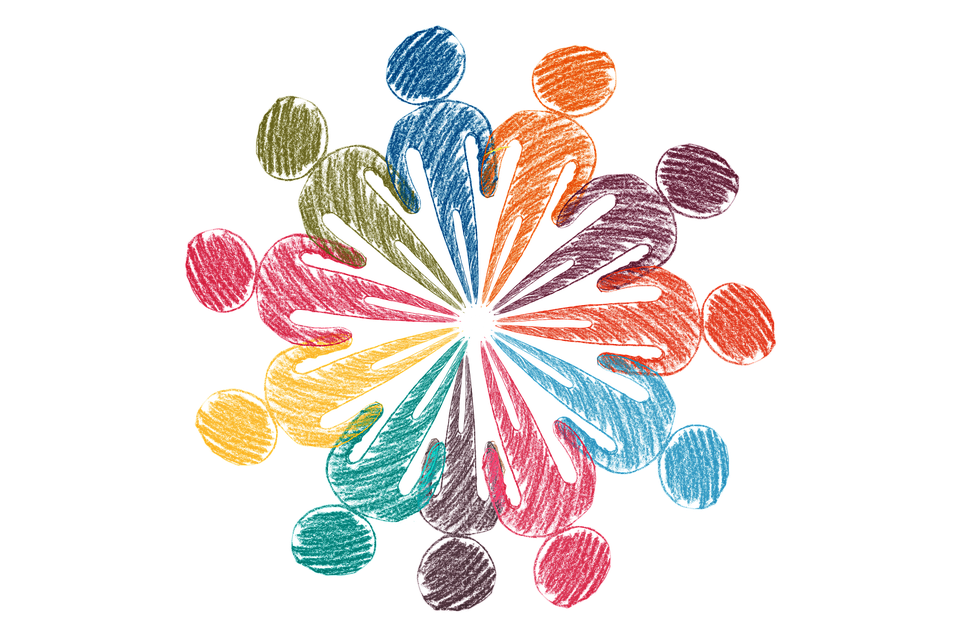The previous chapters in this textbook described how to create a research question and answer it using the methods of social science. Once you’ve completed your analysis, your project is not over. In many ways, it is just beginning. In the beginning of this textbook, you were introduced to the idea that social work research as knowledge for action on behalf of target populations. Research that sits idle on your computer is not of use to anyone. Most social workers who conduct research hope their work will have relevance to others besides themselves. As such, research is a public activity. While the work may be conducted by an individual in a private setting, the knowledge gained from that work should be shared with peers and other parties who may have an interest. Understanding how to share your work is an important aspect of the research process.
Chapter Outline
- 12.1 What to share and why we share
- 12.2 Disseminating your findings
- 12.3 The uniqueness of the social work perspective on science
Content Warning
This chapter discusses or mentions the following topics: sexual and domestic violence, poverty, mental health, the criminal justice system, and cancer.
12.1 What to share and why we share
Learning Objectives
- Identify the six questions researchers should be able to answer to ensure that their ethical obligations have been met
- Describe how social work roles might shape how a person shares research findings
When preparing to share your work with others you must decide what to share, with whom to share it, and in what format(s) to share it. In this section, we’ll consider the former two aspects of sharing your work. In the section that follows, we’ll consider the various formats through which social workers might share their work.

Sharing it all: The good, the bad, and the ugly
Because conducting social work research is a scholarly pursuit and because social work researchers generally aim to reach a true understanding of social processes, it is crucial that we share all aspects of our research—the good, the bad, and the ugly. Doing so helps ensure that others will understand, use, and effectively critique our work. We considered this aspect of the research process in Chapter 3, but it is worth reviewing here. We learned about the importance of sharing all aspects of our work for ethical reasons and for the purpose of replication. In preparing to share your work with others, and in order to meet your ethical obligations as a social work researcher, challenge yourself to answer the following questions:
- Why did I conduct this research?
- How did I conduct this research?
- For whom did I conduct this research?
- What conclusions can I reasonably draw from this research?
- Knowing what I know now, what would I do differently?
- How could this research be improved?
Understanding why you conducted your research will help you be honest—with yourself and your readers—about your own personal interest, investments, or biases with respect to the work. Being able to clearly communicate how you conducted your research is also important. This means being honest about your data collection methods, sample and sampling strategy, and data analysis.
The third question in the list is designed to help you articulate who the major stakeholders are in your research. Of course, the researcher is a stakeholder. Additional stakeholders might include funders, research participants, or others who share something in common with your research subjects (e.g., members of some community where you conducted research or members of the same social group, such as parents or athletes, upon whom you conducted your research). Professors for whom you conducted research as part of a class project might be stakeholders, as might employers for whom you conducted research. Understanding the answer to this question will allow you target formal and informal venues to share your research, which we will review in the next section.
The fourth question should help you think about the major strengths of your work. Finally, the last two questions are designed to make you think about potential weaknesses in your work and how future research might build from or improve upon your work. Presenting your research honestly requires admitting the limitations of your study but arguing why the results are important anyway. All scientific studies contain limitations and are open to questioning.
Social work roles
Sharing social work research is important to social workers across a variety of roles. Dubois and Krogsrud Miley (2005) describe generalist social work roles across three practice areas. The first practice area is resource management, and generalist social workers should understand that “resources are power” (p. 236). Organizations and individuals with money, knowledge, talent, staff, office space, technology, and other resources hold power in the social space and our ability to martial those resources on behalf of our clients can determine their treatment outcomes. The second practice area is education, and the authors emphasize that “knowledge is power,” as well. Social work involves learning from and educating our clients, as well as sharing our knowledge where it is needed in the social service system. The final practice area is consultancy, recognizing that social workers bring expertise and resources and collaborate with clients to create solutions to problems. Let’s think about how social workers on the micro, meso, and macro level might act within these roles to bring about change based on empirical research findings.

For social worker researchers engaged in macro social work, the activist role demands advocacy on behalf of target populations to individuals who control resources. Dissemination of social research findings can support this role by lobbying policy-makers directly through phone calls or letter campaigns which include research results. Another option would be to partner with service agencies who can use research results in grant applications for additional funding for their services. Sharing research–in the form of a journal article, conference presentation, editorial article, interview on local media, among countless others—contributes to what we know about the social problem addressed in the study as a society. The researcher may also engage in the role of a planner, using her research to help create new programs to address a problem in the community.
Meso-level social work roles are also compatible with disseminating social work research. As a convener or mediator, social workers can bring together community leaders and organizations to address problems as a team. Sharing their research, social work researchers highlight how the problems of individuals, communities, and society are intertwined. Perhaps the research could be a catalyst to creating a task force in the community. Or it could convince a variety of stakeholders such as anti-poverty organizations, anti-racist organizations, as well as police, to come together to address a problem jointly. It may also be used to propose trainings and outreach in the community.
Micro-level social workers can share the results of a study with their clients, which may make them feel less alone and contextualize their struggle within their home community. They can use research findings to advocate within the current system for their client’s right to services, for exceptions to policies that block them from accessing necessary resources, and for the effective delivery of services. Research may also cue them to address the effects of racism and poverty in their clients’ lives, providing a more comprehensive approach to intervention. Micro-level social workers also engage in educational practice and prevention roles, which can be informed and enhanced by research as well.
Social work research is research for action on behalf of target populations. Sharing results with the world is a necessary part of that mission.
Key Takeaways
- As they prepare to share their research, researchers must keep in mind their ethical obligations to their peers, their research participants, and the public.
- Social work roles across the ecosystem will shape how one’s results are shared and for what purpose.
12.2 Disseminating your findings
Learning Objectives
- Define dissemination
- Describe how audience impacts the content and purpose of dissemination
- Identify the options for formally presenting your work to other scholars
- Explain the role of stakeholders in dissemination
Dissemination refers to “a planned process that involves consideration of target audiences and the settings in which research findings are to be received and, where appropriate, communicating and interacting with wider policy and…service audiences in ways that will facilitate research uptake in decision-making processes and practice” (Wilson, Petticrew, Calnan, & Natareth, 2010, p. 91). In other words, dissemination of research findings involves careful planning, thought, consideration of target audiences, and communication with those audiences. Writing up results from your research and having others take notice are two entirely different propositions. In fact, the general rule of thumb is that people will not take notice unless you help and encourage them to do so.

Disseminating your findings successfully requires determining who your audience is, where your audience is, and how to reach them. When considering who your audience is, think about who is likely to take interest in your work. Your audience might include those who do not express enthusiastic interest but might nevertheless benefit from an awareness of your research. Your research participants and those who share some characteristics in common with your participants are likely to have some interest in what you’ve discovered in the course of your research. Other scholars who study similar topics are another obvious audience for your work. Perhaps there are policymakers who should take note of your work. Organizations that do work in an area related to the topic of your research are another possibility. Finally, any and all inquisitive and engaged members of the public represent a possible audience for your work.
Where your audience is should be fairly obvious. You know where your research participants are because you’ve studied them. You can find interested scholars on your campus, at professional conferences, and via publications such as professional organizations’ newsletters and scholarly journals. Policymakers include your state and federal representatives who, at least in theory, should be available to hear a constituent speak on matters of policy interest. Perhaps you’re already aware of organizations that do work in an area related to your research topic, but if not, a simple web search should help you identify possible organizational audiences for your work. Disseminating your findings to the public more generally could take any number of forms: a letter to the editor of the local newspaper, a blog, or even a post or two on your social media channels.
Finally, determining how to reach your audiences will vary according to which audience you wish to reach. Your strategy should be determined by the norms of the audience. For example, scholarly journals provide author submission instructions that clearly define requirements for anyone wishing to disseminate their work via a particular journal. The same is true for newspaper editorials; check your newspaper’s website for details about how to format and submit letters to the editor. If you wish to reach out to your political representatives, a call to their offices or a simple web search should tell you how to do so.
Disseminating findings involves the following three steps:
- Determine who your audience
- Identify where your audience
- Discover how best to reach your audience
Tailoring your message to your audience
Once you are able to articulate with whom to you wish to share your research, you must decide what to share. While you would never alter your actual findings for different audiences, understanding who your audience is will help you frame your research in a way that is most meaningful to that audience. Certainly, the most obvious candidates with whom you’ll share your work are other social scientists. If you are conducting research for a class project, your main “audience” will probably be your professor. Perhaps you’ll also share your work with other students in the class.
What is more challenging, and possibly a little scary, is sharing your research with the wider world. Sharing with professional audiences is designed to bring your work to the attention of other social scientists and academics, but also other social workers or professionals who practice in areas related to your research. If you are sharing with other scientists, they are probably interested in your study’s methods, particularly statistical tests or data analysis frameworks. Sharing your work with this audience will require you to talk about your methods and data in a different way than you would with other audiences. Professional social workers are more likely to want to hear about the practice and policy implications of your research.

Plagiarism
Scholars take extraordinary care not to commit plagiarism. Presenting someone else’s words or ideas as if they are your own is among the most egregious transgressions a scholar can commit. Indeed, plagiarism has ended many careers (Maffly, 2011) [1] and many students’ opportunities to pursue degrees (Go, 2008). [2] Take this very seriously. If you feel a little afraid and paranoid after reading this warning, consider it a good thing— and let it motivate you to take extra care to ensure that you are not plagiarizing the work of others.
Peer-reviewed journal articles
Researchers commonly submit manuscripts to peer-reviewed academic journals. These journals are commonly read by other researchers, students, and practitioners. Peer review is a formal process in which other scholars review the work to ensure it is a high quality before publication. A manuscript may be rejected by a journal after being submitted. Often, this is an opportunity for the researchers to correct problems with the manuscript or find a journal that is a better fit for their research findings. Usually, even if a manuscript is accepted for publication, the peer reviewers will request improvements to it before it can be published. The process of peer review helps improve the quality of journal articles and research.
Formal presentations
Getting your work published in a journal is challenging and time-consuming, as journals receive many submissions but have limited room to publish. Researchers often seek to supplement their publications with formal presentations, which, while adhering to stringent standards, are more accessible and have more opportunities to share research. For researchers, presenting your research is an excellent way to get feedback on your work. Professional social workers often make presentations to their peers to prepare for more formal writing and publishing of their work. Presentations might be formal talks, either individually or as part of a panel at a professional conference; less formal roundtable discussions, another common professional conference format; or posters that are displayed in a specially designated area.

Presentations to stakeholders
While it is important to let academics and scientists know about the results of your research, it is important to identify stakeholders who would also benefit from knowing the results of your study. Stakeholders are individuals or groups who have an interest in the outcome of the study you conduct. Instead of the formal presentations or journal articles you may use to engage academics or fellow researchers, stakeholders will expect a presentation that is engaging, understandable, and immediately relevant to their lives and practice. Informal presentations are no less rigorous than formal presentations, but they do not follow a strict format.
Disseminating to the general public
While there are a seemingly infinite number of informal audiences, there is one more that is worth mentioning—the general public. Part of our job as social workers is to shine a light towards areas of social injustice and raise the consciousness of the public as a whole. Researchers commonly share their results with popular media outlets to reach a broader audience with their study’s conclusions. Unfortunately, journalism about scientific results can sometimes overstate the degree of certainty researchers have in their conclusions. Consequently, it’s important to review the journalistic standards at the media outlet and reporter you approach by examining their previous work and clarifying the degree of control over the final product you will have.

Reports written for public consumption differ from those written for scholarly consumption. As noted elsewhere in this chapter, knowing your audience is crucial when preparing a report of your research. What are they likely to want to hear about? What portions of the research do you feel are crucial to share, regardless of the audience? What level of knowledge do they have about your topic? Answering these questions will help you determine how to shape any written reports you plan to produce. In fact, some outlets answer these questions for you, as in the case of newspaper editorials where rules of style, presentation, and length will dictate the shape of your written report.
Conclusion
Whoever your audience, don’t forget what it is that you are reporting: social scientific evidence. Take seriously your role as a social scientist and your place among peers in your discipline. Present your findings as clearly and as honestly as you possibly can; pay appropriate homage to the scholars who have come before you, even while you raise questions about their work; and aim to engage your readers in a discussion about your work and about avenues for further inquiry. Even if you won’t ever meet your readers face-to-face, imagine what they might ask you upon reading your report, imagine your response, and provide some of those details in your written report.
Key Takeaways
- Disseminating findings takes planning and careful consideration of your audiences.
- The dissemination process includes determining the who, where, and how of reaching your audiences.
- Plagiarism is among the most egregious academic transgressions a scholar can commit.
- In formal presentations, include your research question, methodological approach, major findings, and a few final takeaways.
- Reports for public consumption usually contain fewer details than reports for scholarly consumption.
- Keep your role and obligations as a social scientist in mind as you write research reports.
Glossary
- Dissemination- “a planned process that involves consideration of target audiences and the settings in which research findings are to be received and, where appropriate, communicating and interacting with wider policy and…service audiences in ways that will facilitate research uptake in decision-making processes and practice” (Wilson, Petticrew, Calnan, & Natareth, 2010, p. 91)
- Plagiarism- presenting someone else’s words or ideas as if they are your own
12.3 The uniqueness of the social work perspective on science
Learning Objectives
- Describe how social workers contribute to social science
Social workers, by the nature of their work and their ethical orientation, have a lot of knowledge and expertise to contribute to social science. Social work research is, by its very nature, interdisciplinary. A social worker who wishes to understand how masculinity is impacting her adolescent male clients must become fluent in not only the social work literature on masculinity but also the literature from gender studies, sociology, and psychology. The synthesis of the insights from various social science disciplines, each representing a part of the person-in-environment framework, is a hallmark of strong social work research. Social work has, over time, established a substantial base of empirical and theoretical insights, represented in journals such as Social Work and Social Service Review. But its interdisciplinary roots remain. Given the recent direction in research and practice grant funding towards interdisciplinary projects, this is a significant strength.

Social workers are a pragmatic group. We use what is most useful to us in a given practice situation. This pragmatism also extends to the theories that social workers use. Social work education emphasizes theoretical fluency, or the ability to switch theoretical frames to understand the same situation in different ways. As social workers, we understand that as one of many different theoretical lenses through which to view a given situation. Each theory will lend itself to different testable propositions in quantitative research or jumping-off points for qualitative research. Because of this, social workers can see beyond disciplinary and theoretical blinders to produce a more comprehensive understanding of a phenomenon.
In addition to incorporating multiple theories, social work is an explicitly multi-paradigmatic discipline. It acknowledges not only the methods and assumptions of the positivist paradigm, which is almost universally accepted in all social science disciplines, but also the social constructionist, critical, and postmodern paradigms. Social workers understand the limitations of the positivist paradigm and have created new ways of knowing to respond to the unquantifiable and context-dependent aspects of the human experience. Social workers can challenge social science that is deemed to be “universally true” for all people because it understands the complexity and diversity of human life.
Social work is a values-oriented profession. When social workers examine theories, research, or social problems, they do so with an orientation towards social justice, self-determination, strengths and capacities, and interdependence between all peoples. These values are a strength, as they help social workers interpret and analyze research findings in terms of fighting oppression. At the same time, social work is action-oriented. Not only do social workers think in terms of social change, but they seek to create that change themselves. Social workers always ask the “so what” question. That is, “so what does this mean for my client?”
Spotlight on UTA School of Social Work
Reporting research on Texan survivors of intimate partner violence
Dr. Rachel Voth Schrag of the UTA School of Social work always thinks about dissemination of her research findings at the beginning of a research project. Knowing at the outset who she wants to share her findings with, and how she hopes they will use them, means she will be able to ask the most helpful research questions.
Dr. Voth Schrag’s team recently worked with the Texas Council on Family Violence on a research project which was all about generating information to share with intimate partner violence (IPV) service agencies, funders, and those who set IPV policy for the state of Texas (Voth Schrag, Ravi, & Robinson, 2019).
They wanted to learn about the experiences of Texan survivors who had not chosen to access IPV service agencies (like shelters, counseling, and advocacy programs). They believed that these survivors could share insights to help improve services access and delivery throughout Texas. They interviewed nearly 40 survivors, and combined their data with work from other Texan scholars.
A particularly strong finding was that many of the survivors they talked too had made attempts to access services, but had not had positive first experiences. Several survivors have identified feeling stymied by initial interactions with potential helpers, sharing that they began the process of disclosing aspects of their IPV experiences, but that the responses they received (including from law enforcement, health care, child protective, and IPV service staff) were not helpful. For some, an agency’s inability to meet their initial needs (for example, for shelter or crisis intervention) created disconnects which disrupted the possibility of future interactions.
From the outset of the project, Voth Schrag and her team wanted to be able to share their findings — and the voices of the survivors who talked with them — with IPV agency staff, funders of IPV services across the state, and policy makers who set priorities for the IPV service sector. They worked with the Texas Council on Family Violence, their statewide IPV services coalition, to identify the most effective dissemination strategy for each of these groups.
By identifying who they wanted to share their findings with, and what they might be most interested in learning about, the team was able to tailor their research questions and methods to gather the sorts of data that both answer the questions they were interested in and generate the kinds of data that would capture the attention of influential individuals and groups. If you have the ability to answer a pressing question for someone, they’ll usually keep listening to you when you add a little extra information. This allowed Voth Schrag and her team to share their findings more broadly. They spent several days in Austin giving presentations aimed at specific groups — inviting funders to one presentation, and agency executive directors to another. They also spent time answering questions about their findings in formal and informal meetings with stakeholders. The Texas Council on Family Violence was able to harness the power of their connections to reach leaders from across the state, increasing the spread and impact of the work, and allowing the team to underscore key steps, like expanding funding for and access to emergency shelter and transitional housing, that agencies, funders, and policy makers can take to address IPV and reach survivors who are not currently accessing services.
While it was great to be able to share their findings in person, Texas is a big state, and agency staff in particular are often not able to travel to Austin for research dissemination meetings. To reach this audience, the team recorded a webinar about the project and key findings, which is available on the Texas Council on Family Violence’s website. They also participated in the development of a website that provides information on their study methods, findings, and conclusions, and also has lots of other useful data and tools that can support IPV service agencies across Texas in using data in their work.
Key Takeaways
- Social work contributes to social science through its orientation towards interdisciplinary knowledge, multiple theories and paradigms, and action on behalf of clients.
